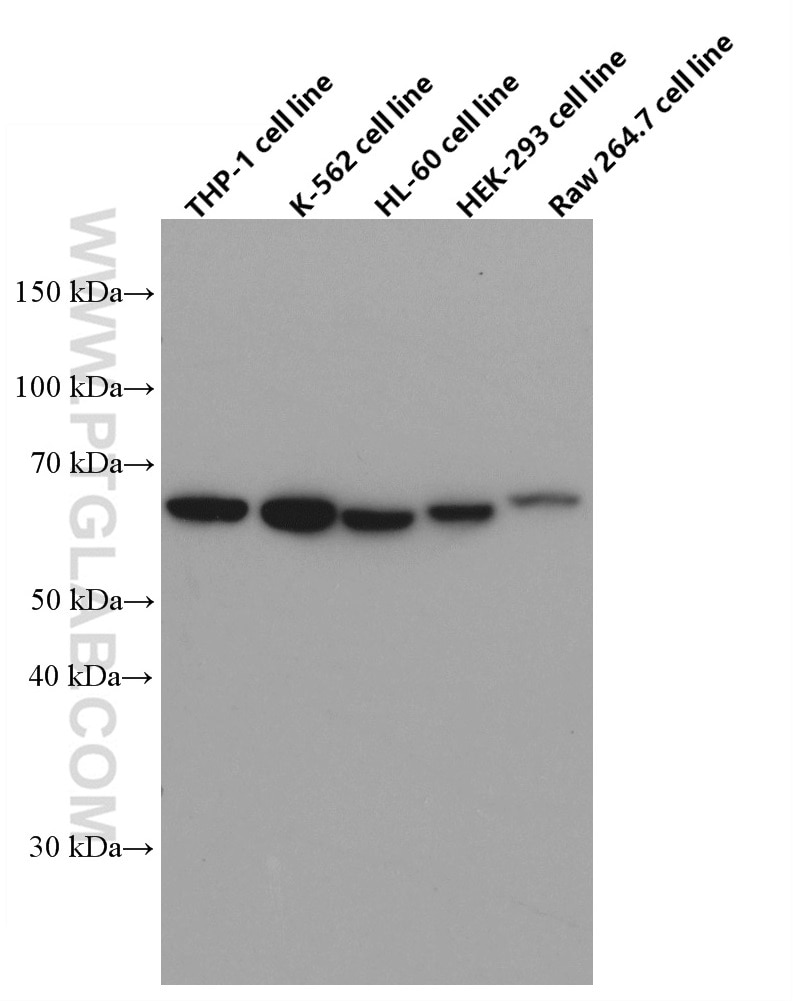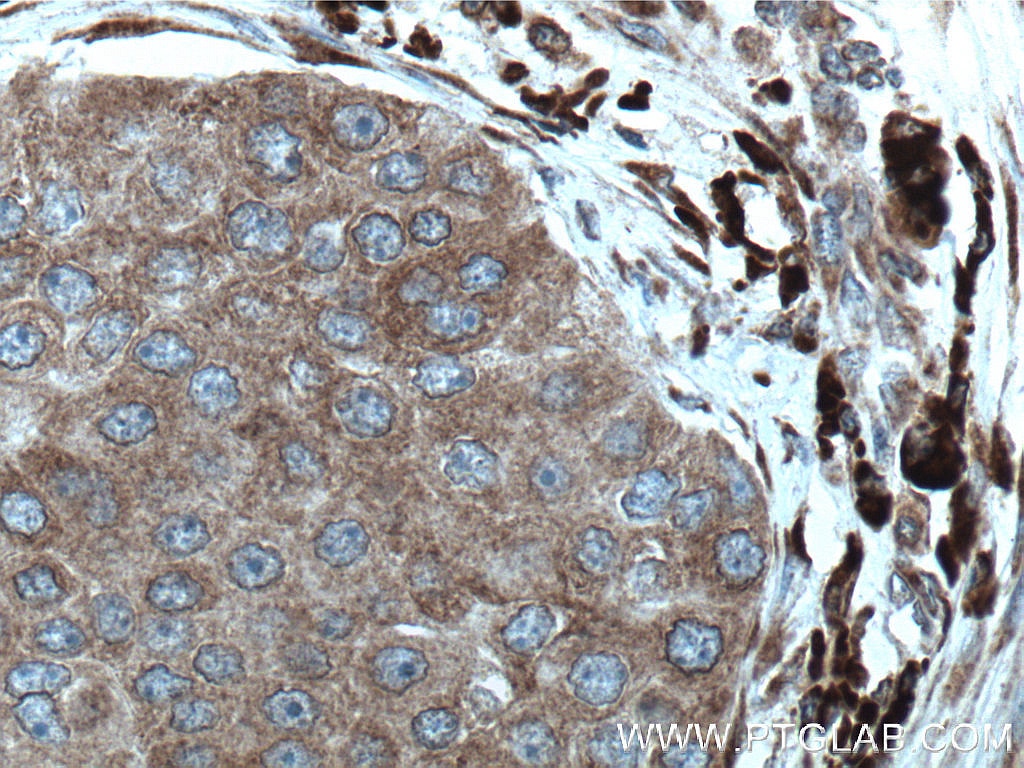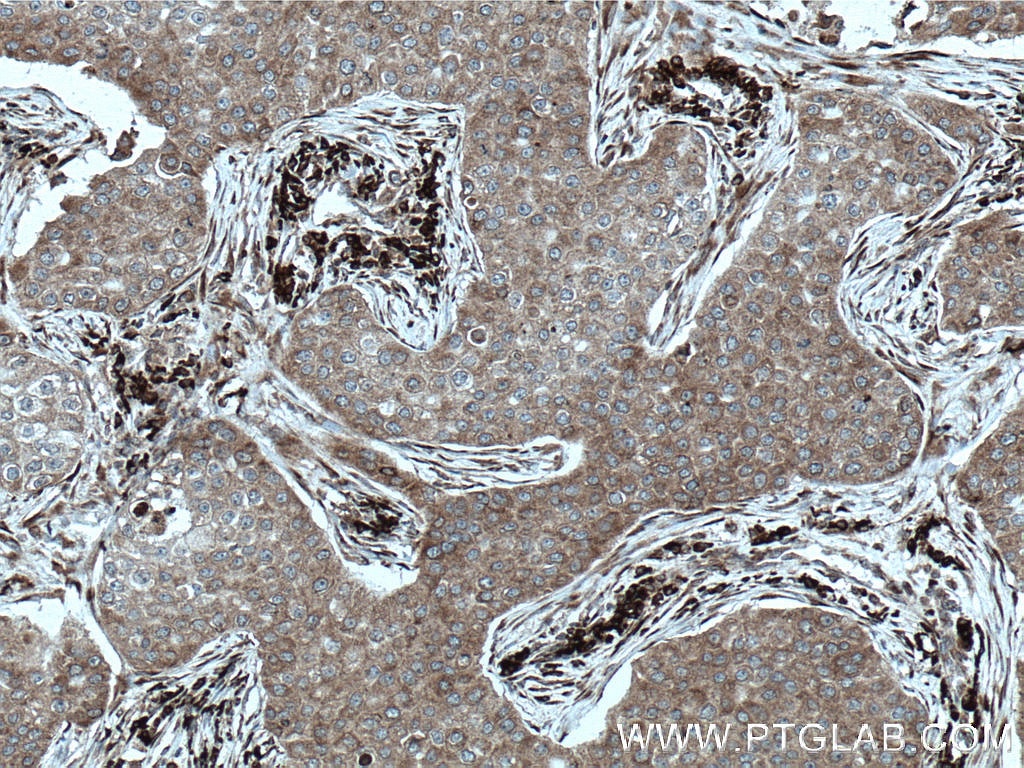- Phare
- Validé par KD/KO
Anticorps Monoclonal anti-STT3A
STT3A Monoclonal Antibody for WB, IHC, Indirect ELISA
Hôte / Isotype
Mouse / IgG1
Réactivité testée
Humain, rat, souris
Applications
WB, IHC, Indirect ELISA
Conjugaison
Non conjugué
CloneNo.
1E2B12
N° de cat : 66581-1-PBS
Synonymes
Galerie de données de validation
Informations sur le produit
66581-1-PBS cible STT3A dans les applications de WB, IHC, Indirect ELISA et montre une réactivité avec des échantillons Humain, rat, souris
| Réactivité | Humain, rat, souris |
| Hôte / Isotype | Mouse / IgG1 |
| Clonalité | Monoclonal |
| Type | Anticorps |
| Immunogène | STT3A Protéine recombinante Ag27072 |
| Nom complet | STT3, subunit of the oligosaccharyltransferase complex, homolog A (S. cerevisiae) |
| Masse moléculaire calculée | 705 aa, 81 kDa |
| Poids moléculaire observé | 65 kDa |
| Numéro d’acquisition GenBank | BC020965 |
| Symbole du gène | STT3A |
| Identification du gène (NCBI) | 3703 |
| Conjugaison | Non conjugué |
| Forme | Liquide |
| Méthode de purification | Purification par protéine G |
| Tampon de stockage | PBS only |
| Conditions de stockage | Store at -80°C. 20ul contiennent 0,1% de BSA. |
Informations générales
STT3A, also named as Integral membrane protein 1, belongs to the STT3 family. STT3A is expressed at high levels in placenta, liver, muscle and pancreas, and at very low levels in brain, lung and kidney. STT3A is a catalytic subunit of the N-oligosaccharyl transferase (OST) complex which catalyzes the transfer of a high mannose oligosaccharide from a lipid-linked oligosaccharide donor to an asparagine residue within an Asn-X-Ser/Thr consensus motif in nascent polypeptide chains. STT3A is present in the majority of OST complexes and mediates cotranslational N-glycosylation of most sites on target proteins, while STT3B-containing complexes are required for efficient post-translational glycosylation and mediate glycosylation of sites that have been skipped by STT3A. There are two isoforms of STT3A with molecular weight of 81 and 70 kDa. 66581-1-Ig antibody detects a protein around 65-70 kDa in SDS-PAGE which is similar to papers published. (PMID: 32005703, 25135935)







